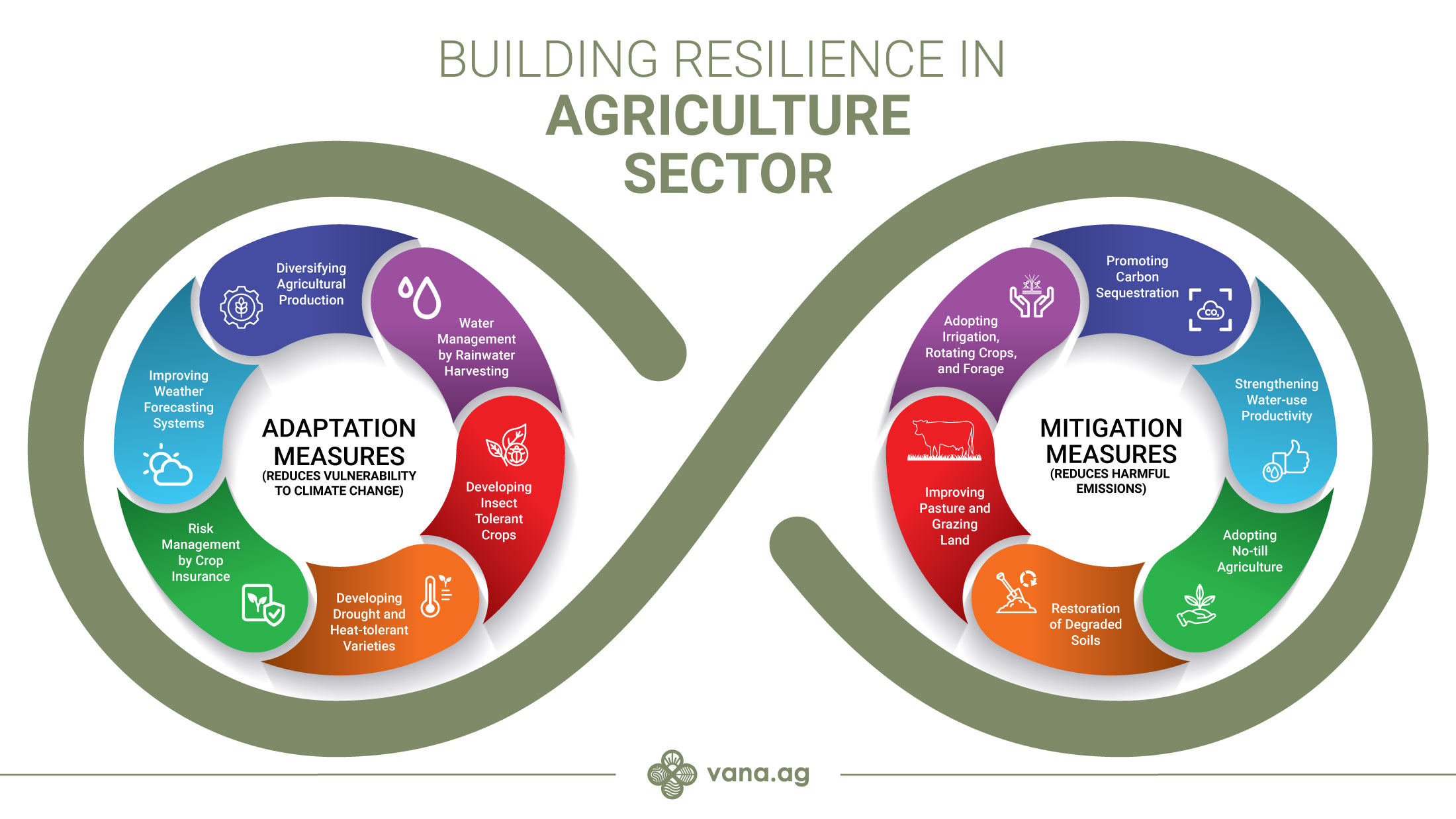
Rapid and catastrophic environmental changes such as recurrent floods, droughts and extreme
temperatures are breaking the backbone of agriculture. The agriculture sector, which is primarily
responsible for feeding the burgeoning population and generating livelihoods for millions of
people, is marred due to climatic changes. As a result, there is a significant rise in hunger,
poverty, and food insecurity heightened by the slower growth of the economy. The agriculture
sector is also responsible for climate change, releasing significant amounts of greenhouse gases
(GHG) into the atmosphere. Agricultural activities contribute approximately 30% of total GHG
emissions, mainly due to animal waste and the use of chemical fertilizers and pesticides.
To build a resilient agriculture sector, there are primarily two choices. Firstly, adapting measures
to reduce agriculture's vulnerability to climate change. For instance, improving water
management through rainwater harvesting, effective use of soil and groundwater, diversifying
agricultural production, improving weather forecasting systems, developing agricultural science
and technology for drought and heat-tolerant varieties and insect-resistant crops, improving risk
management through crop insurance, and providing affordable microfinance.
Secondly, implementing mitigation measures to reduce emissions. Promoting carbon
sequestration into the soil, adopting no-till agriculture, reducing the amount of bare fallow,
restoration of degraded soils, improving pastures and grazing land, adopting irrigation, rotating
crops, and forage, strengthening water use productivity, and management of livestock and
manure are some of the mitigation measures that can be adapted.
The best course forward, however, would be to synergise mitigation and adaptation measures, as
adaptive measures alone are becoming more expensive and less effective. Additionally, the
excessive production of genetically modified crops, which is one of the adaptive measures, will
be rendered ineffective over time because the pests that these toxins used to deter might
eventually develop resistance towards them. Similarly, preserving the gene pool of climate-
resilient cultivars is challenging too. More so, if the mitigation objectives are achieved
successfully, there will be less need for adaptive measures. Thus, the synergy between the two
would be a smart choice that would also aid in sustainable development.

